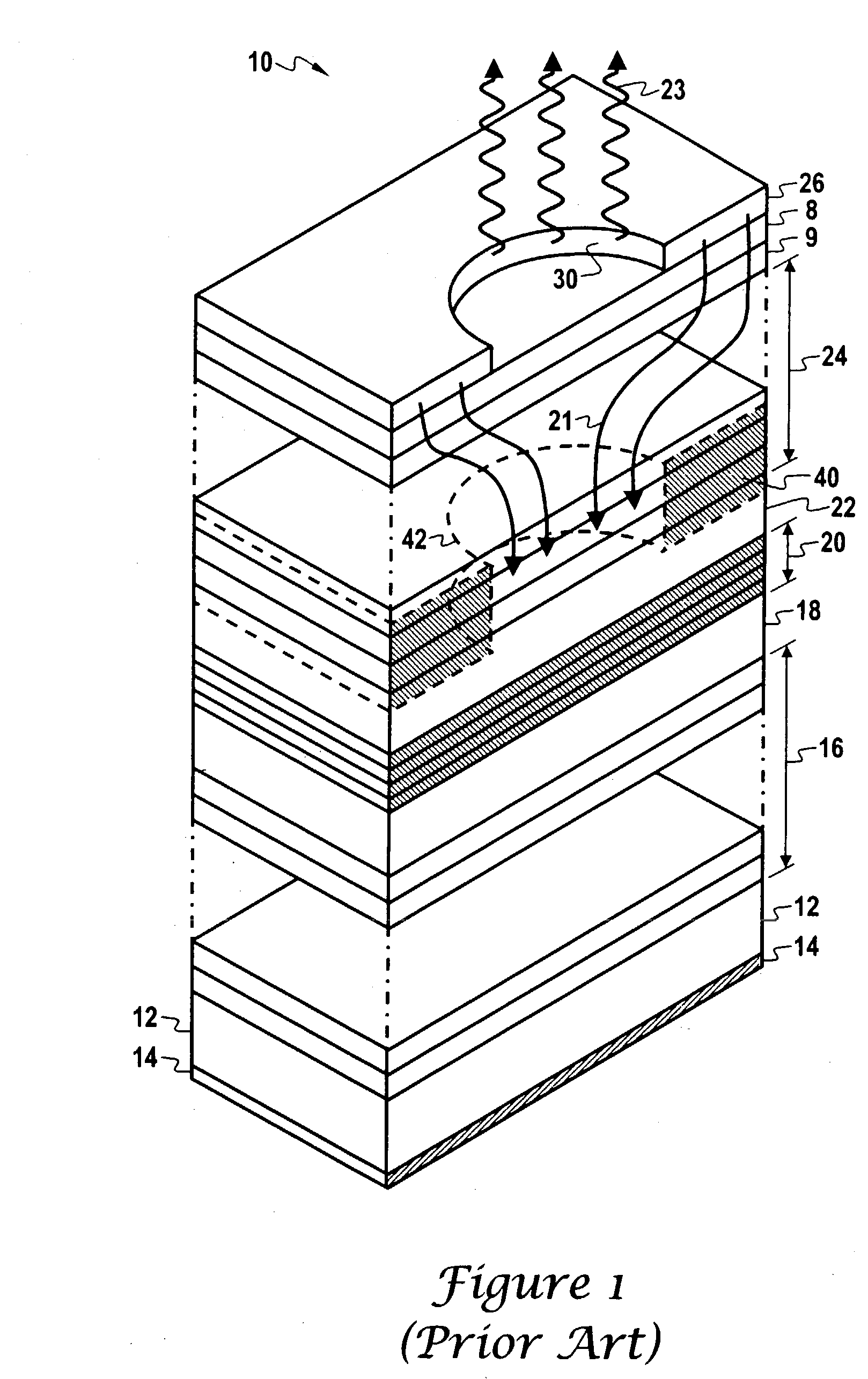Material system for Bragg reflectors in long wavelength VCSELs
a bragg reflector and material system technology, applied in the field of laser mirrors, can solve the problems of difficult to produce high-quality alas/gaas dbr on inp substrates, prior art distributed bragg reflectors (dbr) significantly less than optimal, and achieve good thermal conductivity and high index of refraction differences
- Summary
- Abstract
- Description
- Claims
- Application Information
AI Technical Summary
Benefits of technology
Problems solved by technology
Method used
Image
Examples
Embodiment Construction
[0032] The principles of the present invention provide for DBRs comprised of stacked layers of Al and of P. Those stacked layers are beneficially fabricated on an InP substrate, and can be done so without changing the group V material (P). Furthermore, a combination of an InP substrate and an AlP DBR are particularly useful in long-wavelength VCSEL applications.
[0033] FIG. 2 illustrates a vertical cavity surface emitting laser (VCSEL) 100 that is in accord with the principles of the present invention. FIG. 2 should be understood as a simplified "cut-away" schematic depiction of a VCSEL that is generally configured as shown in FIG. 1. Thus, similar element numbers will be used for similar elements in FIG. 2 that were used in FIG. 1. However, the VCSEL 100 includes novel and useful top and bottom distributed Bragg reflectors (DBRs).
[0034] As shown in FIG. 2, the VCSEL 100 includes an n-doped indium phosphorus (InP) substrate 112 having an n-type electrical contact 114. An n-doped lowe...
PUM
 Login to View More
Login to View More Abstract
Description
Claims
Application Information
 Login to View More
Login to View More - R&D
- Intellectual Property
- Life Sciences
- Materials
- Tech Scout
- Unparalleled Data Quality
- Higher Quality Content
- 60% Fewer Hallucinations
Browse by: Latest US Patents, China's latest patents, Technical Efficacy Thesaurus, Application Domain, Technology Topic, Popular Technical Reports.
© 2025 PatSnap. All rights reserved.Legal|Privacy policy|Modern Slavery Act Transparency Statement|Sitemap|About US| Contact US: help@patsnap.com



